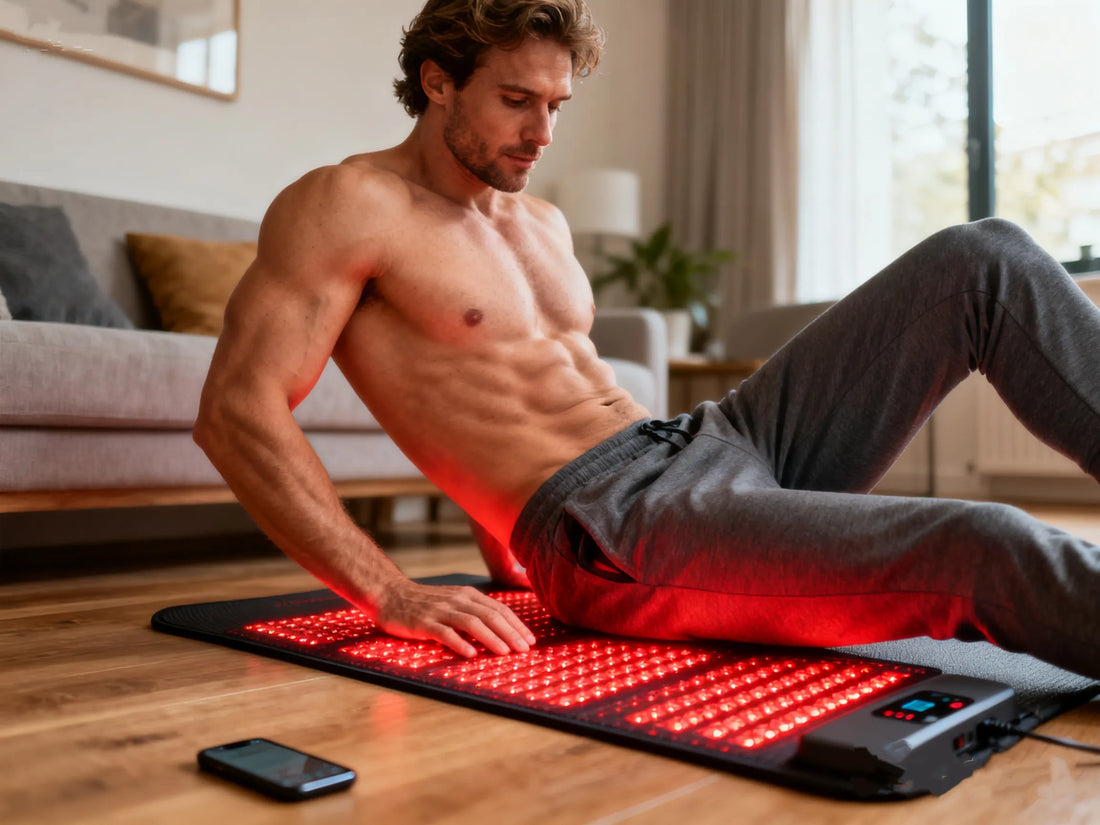1. Why Athletes Turn to Red Light Therapy
Professional athletes are always searching for ways to recover faster, reduce pain, and enhance performance. Recently, red light therapy has gained strong attention because it supports natural healing without drugs or invasive treatments. While this technology is popular among athletes, it’s not limited to them—anyone experiencing muscle soreness, fatigue, or joint stiffness can benefit. If you’re new to red light therapy mats, you can learn from how athletes use them and apply the same methods to your own recovery routine.
2. How Red Light Therapy Mats Work

Red light therapy uses wavelengths of red light (600–700 nm) and near-infrared light (800–900 nm).
-
Red light targets the skin’s surface, stimulating circulation and collagen production.
- Near-infrared light penetrates deeper into muscles and joints, improving cellular energy and reducing inflammation.
When combined in a mat, these lights deliver full-body coverage, making it easier to relax, recover, and recharge.
3. The Benefits You Can Expect
Consistent use of a red light therapy mat may bring multiple advantages:
-
Muscle recovery: speeds up the clearance of lactic acid after workouts.
-
Pain relief: reduces inflammation and stiffness in joints and muscles.
-
Better circulation: improves oxygen delivery to tissues, aiding healing.
-
Enhanced performance: supports higher energy levels by boosting ATP production in cells.
- Relaxation and sleep: light exposure can help regulate circadian rhythm, promoting deeper rest.
4. How to Use a Red Light Therapy Mat Correctly
If you’re just starting, keep it simple:
-
Frequency: 10–20 minutes per session, 4–5 times per week.
-
Placement: lie directly on the mat or position it against the area needing recovery. Clothing should be minimal so light can reach the skin.
- Consistency: like exercise, results build over time—noticeable improvements often appear after a few weeks of regular use.
5. What to Look for When Choosing Your First Mat
Beginners often struggle with uncertainty—“Which mat is right for me?” Here are the most important factors:
-
Dual wavelengths: both red and near-infrared light for surface and deep benefits.
-
Power output: enough intensity to penetrate muscles effectively.
-
Size: a full-body mat offers versatility, while smaller pads target specific areas.
-
Safety certifications: UL, CE, or similar marks ensure safe operation.
- Ease of use: portability, foldability, and simple controls make daily use stress-free.
6. Why Mats Over Other Red Light Devices?
There are several types of red light therapy products:
-
Handheld devices: compact and good for spot treatment, but time-consuming for larger areas.
-
Light panels: powerful, but require standing or sitting near them, limiting relaxation.
- Red light therapy mats: provide large coverage, hands-free use, and a comfortable experience.
Conclusion: For athletes and beginners alike, mats are the most practical choice for consistent, full-body recovery.
7. Beyond Recovery: The Long-Term Value
The biggest concern new users have is uncertainty—“Will this really work for me?” The truth is, red light therapy mats aren’t a quick fix, but when used regularly, they become part of a sustainable recovery routine. Over time, users often report less pain, faster recovery, improved sleep, and a stronger sense of well-being.
8. A Recommended Option for Beginners
If you want a reliable mat that balances performance, safety, and ease of use, the Ricial Red & Infrared Light Therapy Mat (63” x 24”) is a strong choice.
- Large size for full-body coverage
- Dual red + near-infrared wavelengths
- Portable and easy to use at home, in the gym, or while traveling
- Built with safety certifications for peace of mind
For anyone new to red light therapy, this mat offers a straightforward and reassuring way to experience the benefits athletes already enjoy.





